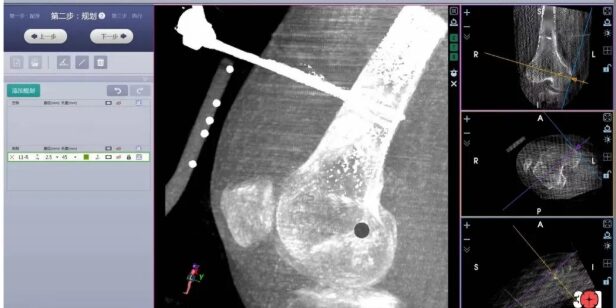Recently, a leading orthopedic surgery department at a major general hospital successfully performed a complex patellar dislocation repair using an intelligent navigation robotic system. This marks a significant breakthrough in the field of sports medicine, ushering in a new era of intelligent, minimally invasive, precise, and personalized surgical procedures.

Long-Term Dislocation, Life Disrupted
The patient had been suffering from recurrent patellar dislocations for several years, which severely impacted daily work and quality of life. After a comprehensive evaluation at the general hospital, the surgical team concluded that traditional surgical methods involved large incisions, longer recovery times, and often relied on the surgeon’s personal experience to position the femoral bone tunnel, leading to a higher margin of error and multiple drilling attempts.
To address these challenges, the team opted to use the latest intelligent navigation robotic system to achieve precision repair of the patient’s patella.
Surgery Planned in 5 Minutes
3D Visualization Throughout
Minimally Invasive, One-Time Drilling
The operation was led by Dr. John Smith, an experienced sports medicine specialist, alongside his colleagues. The intelligent robotic system integrates high-precision optical navigation, a mechanically accurate robotic arm, intraoperative 3D imaging, and intelligent surgical planning software. With sub-millimeter positioning accuracy, it enables precise targeting of the femoral bone tunnel while reducing the surgical incision to just 0.5 mm. This makes it possible to transform traditional open surgeries into ultra-minimally invasive procedures.
During the operation, the surgical team used a dedicated intelligent planning module to complete a highly accurate surgical plan within just five minutes. The positioning of the femoral tunnel was clearly visible on a 3D display screen in real-time, eliminating the trial-and-error approach often seen in conventional surgeries. This dramatically reduced the risk of iatrogenic injury and eliminated the need for multiple drilling attempts.
Following the planned trajectory, the robotic arm guided a single precise drilling to establish the bone tunnel—solving the common issue of bone tunnel widening and loosening caused by repeated manual adjustments during traditional procedures.
Confirmed Accuracy, Faster Recovery
Intraoperative planning and post-operative 3D CT imaging confirmed that the femoral tunnel’s entry point, exit point, and orientation were perfectly aligned with the surgical plan. Remarkably, the patient was able to begin weight-bearing walking with a protective brace just one day after the surgery, laying a solid foundation for fast post-operative recovery.
According to Dr. Smith, the intelligent navigation robot represents a major advancement in the future of orthopedic surgery. It is especially valuable in complex or revision cases, where accurate positioning of grafts can avoid previously implanted hardware and minimize further damage. The system exemplifies the key attributes of future orthopedic surgery: intelligence, precision, minimal invasiveness, and personalized care.






